Fans of eFoil invention Fliteboard push for serious watersport cred
David Trewern’s eFoil invention already has a celebrity following. Now he wants to turn the world of Fliteboard into a serious sport.
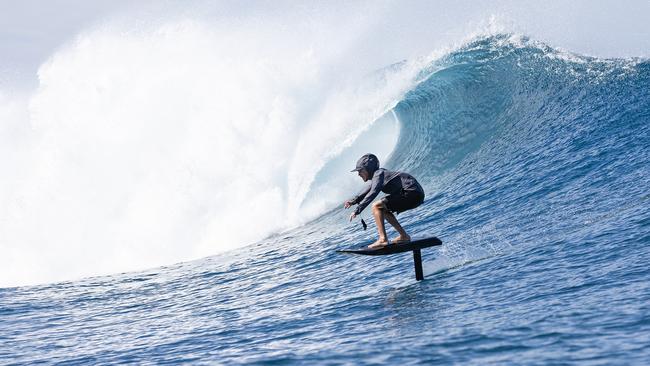
There’s nothing quite like a piece of novelty tech to catch the attention of the rich and famous. Fliteboard, a battery-powered, Bluetooth-operated hydrofoil that looks like a space-age ironing board, created by Byron Bay-based entrepreneur David Trewern, has already scored some of the world’s biggest celebrities as fans. Katy Perry and her partner Orlando Bloom have one; Google founders Larry Page and Sergei Brin have been spotted riding them, as has Shopify founder Tobias Lutke; and even Pearl Jam frontman Eddie Vedder is known to take to the waters with one.
While hydrofoils have existed in some form or another for more than a century, Trewern’s electric adaptation, or eFoil, breaks the mould. According to him, the initial concept for Fliteboard was born out of a combination of impatience and sudden time to spare. After selling a successful digital design and innovation agency, he moved to Byron Bay permanently at the end of 2015 in order to relax and spend more time with family and his lifelong passion of kitesurfing. He had excelled in the sport to the point of breaking the GPS speed world record at 44.9 knots, riding on a board of his own design, back in 2005. It was while attending a kitefoiling event in Brisbane where conditions were less than perfect that Trewern pondered whether there was a way to achieve the same rush and thrill of his favourite sport without having to wait for the wind.
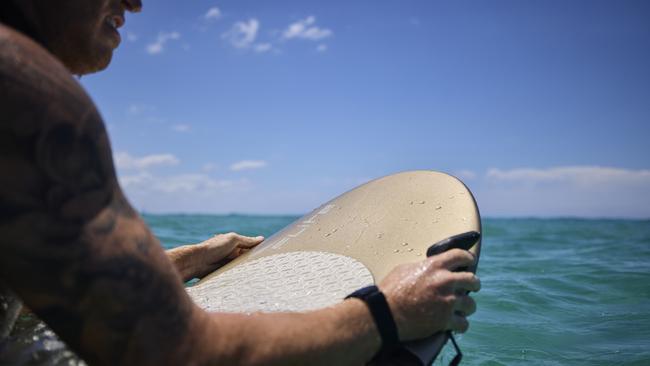
To paraphrase the famous text, if the wind wouldn’t come to him, then Trewern had to create a more efficient board to ride.
“The wind was sort of offshore and light, and we were trying everything we could to get our kites up in the air and get going. We were towing behind boats,” Trewern tells WISH. Sitting in his beachfront home in Belongil, just outside Byron Bay, looking out onto what can only be described as a perfect day – blue skies, a gentle swell and the tail end of summer – Trewern has the salty tan of someone perennially in the water. In a poetic twist, it’s also these kinds of “perfect” conditions that began his journey to inventing Fliteboard. “You’ve got 30 or 40 guys like me all obsessed with kitefoiling up there for a week, and I’m away from the family, and I couldn’t get going. I just had this idea, ‘What if we put a motor on one of these boards?’ All the other guys are like, ‘Well, that’s not going to work. You’re not an engineer – how do you know how to do that?’”
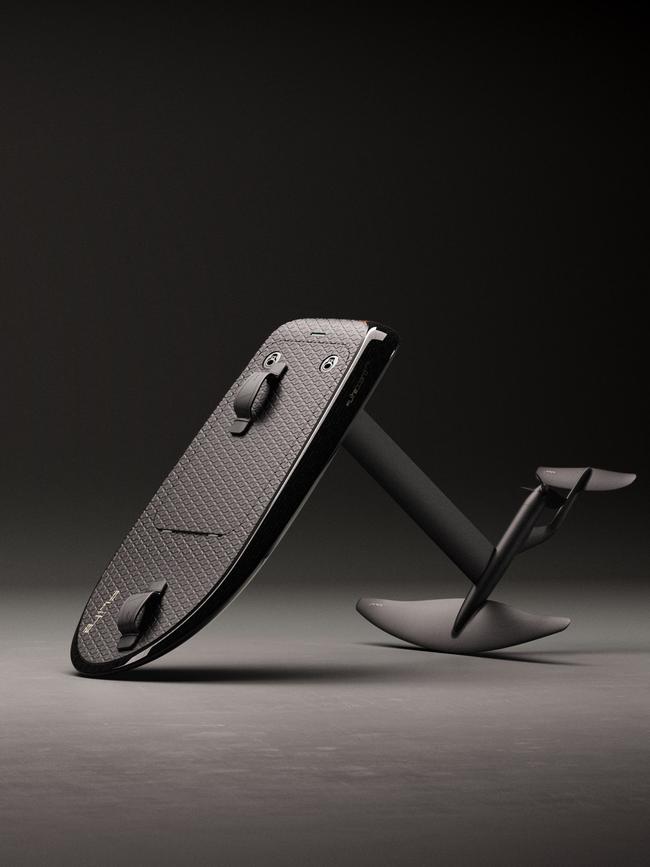
And while he may not have been an engineer, Trewern was tenacious once the idea took hold. What proceeded, explains the 50-year-old, was an intense period of tinkering, testing, failing and going back to the drawing board. “They say that one of the things about entrepreneurs is that if you knew how hard it would be you wouldn’t do it, but it’s a sense of optimism that you have that allows people to create stuff,” he reflects.
The house in Byron quickly became ground zero for what Trewern describes as his mad scientist period. As luck would have it, he says, a local Aldi store had a 3D printer for sale. “I went and bought this 3D printer for $500, set it up downstairs, taught myself CAD, and started ordering motors off the internet and bike batteries and motor controllers and skateboard remotes, and trying to make all this stuff work. Every night we’d go to sleep up here to the sound of a 3D printer.” It would take 14 months of testing before the first prototype of a Fliteboard was ready to set sail. Or, to be more accurate, take off in the water.
The finished product is exactly the kind of slick, Instagram-worthy, technically driven piece of equipment that grabs the attention of early adopters, or simply those with the means to buy the latest gadget on a whim. Its physical specs are equally impressive, involving the kind of high-grade technical materials, such as anodised aircraft-grade aluminium and carbon fibre, those same early adopters on the lookout for a hobby or activity with top-end bragging rights love to roll off the tongue as they explain it to their friends. A rechargeable battery-operated engine also makes it arguably the most environmentally friendly powered watercraft on the market. It’s also silent – all the action happens below the water.
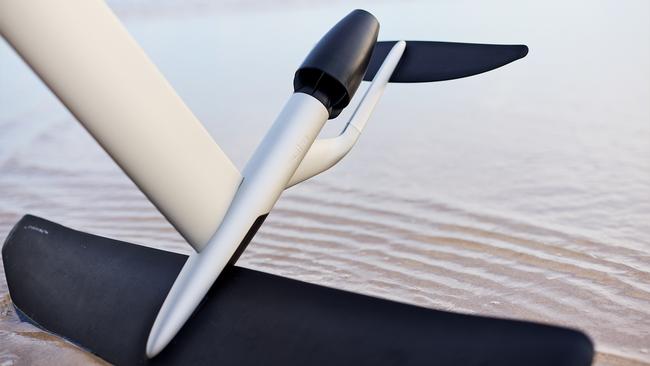
Since the first prototype launched back in 2016, the basics of the Fliteboard design haven’t needed to be tweaked all that much other than a range of board sizes. The biggest changes now tend to happen below the surface of the water and beneath the hood of the board itself. The evolution to the latest Series 3 release, says Trewern, was a simplification of the electronics and a simplification of the software, along with new mast and wing options.
“We’ve improved rust corrosion and waterproofing – all those things have just been fine-tuned,” explains Trewern. “We’ve done a huge amount with Series 3 to reduce the weight. We’ve made the batteries lighter and stronger and put titanium plates on them. We’ve put a material cord and phase-changing material inside that manages the cells thermally so that they last longer.”
Aesthetically, there was little to adjust above the water aside from weight, says Trewern. The Ultra L, the jewel in the new line-up of boards in Series 3 and sitting at the top end of the price bracket at $20,995 per board, is officially the lightest-performance eFoil and uses the world’s lightest lithium-ion eFoil battery, the Flitecell Nano. It weighs just 22.5kg, and also comes with an 80cm mast that lets riders take on bigger waves and deeper turns and improves ride conditions in choppy waters. Made from lightweight carbon, the Ultra L can also be customised with interchangeable propeller, jet system and wings, plus built-in foot straps.
“The original Fliteboard was 36 kilos. So we’ve really brought the weight down just by fine-tuning,” says Trewern. “That really makes a difference to the ride. We’ve also added a jet propulsion with Series 3, which is really smooth and even more quiet.”
Also coming out as part of the Series 3 is a range of lower-priced fibreglass board options in the original Fliteboard and Pro models, with a starting cost of $15,495. The goal, says Trewern, is to continually make the board as accessible as possible. “So we’ve really given people a lot more options. We’ve got different-sized boards. We’ve got a big inflatable board, a little tiny board called the Ultra, which I ride. We’ve got three different batteries, 12 wings. We’ve got a one-way propeller for catching waves. So there’s been a lot of continual improvement but the general concept is very much the same.”
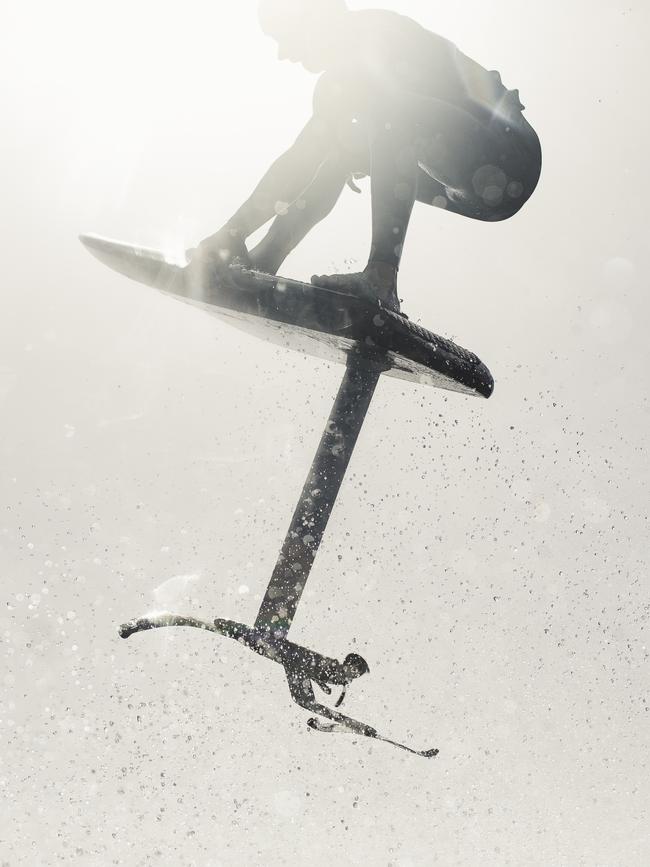
Long term, says Trewern, the goal is take the board out of solely leisure use and create an eFoil sporting league where the Fliteboard can really be tested out by the world’s best performance riders. “I suppose our view is that this will never really take off until it’s a sport because a lot of things like jet skis and windsurfing, they didn’t really explode until there was a sport attached,” he says. “We have run some race events, so for racing. We had an event last year. We’ve had a couple of Flite cup events. We did one in Portugal. We did one in Fort Lauderdale last year and it was awesome.”
Helping this along is a growing crew of performance riders that Trewern has brought into the Fliteboard family – former surfers, kitesurfers and kitefoilers who regularly test new makes and push the boards to their limits, making content for the brand’s admittedly impeccable social media pages. One rider, Adam Bennetts, had been a career surfer before making the switch to foiling in 2019. “And I haven’t surfed since!” he tells WISH.
“It’s weird talking about it because surfing was such a religion when you’re into it. It was my job for 10 years. But there’s something about the feeling of foiling; it’s so foreign, this feeling of flying over the water. It’s so challenging at the start too, which becomes addictive in itself. But when you get that glide – there are no words to describe it.”
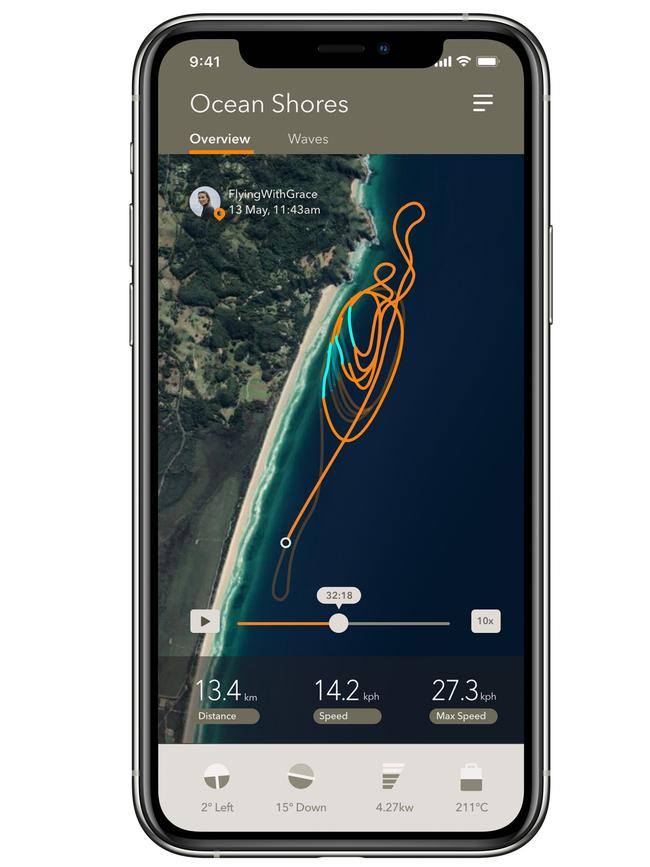
One of the more intriguing details of the Fliteboard experience comes courtesy of its app. Globally connected, it allows you to track and log your rides wherever you are in the world and share them other Fliteboard riders in the process, if that’s your bag. This, for those who like to know who their neighbours are, is particularly fun. You can potentially see where every other Fliteboard rider is, or has ridden.
Opening the app on his own phone, Trewern zooms in on the tiny island of Lampedusa, between Tunisia and Malta, where a bunch of squiggly lines indicate the presence of a Fliteboard rider. Most likely, he says, someone from a superyacht that has docked. Which is, Trewern admits, what makes up a large part of the Fliteboard clientele and customer base. In fact, it was while he was holidaying in the sun on a yacht in Greece that he realised the potential for his pet project.
“I’d wake up every morning and look at all these superyachts around us in this still water and think, ‘This is exactly the place for these things’. Every day, people were getting out on their water toys and riding around on jet skis. It’s so noisy and there are fumes everywhere. Meanwhile you’re just trying to have lunch. I also had my kitefoil there, but I couldn’t use it because we’re kind of anchored behind all these big cliffs and there’s no wind. I just thought, this is exactly the place for this product.”
But monetising your hobby can be a double-edged sword. On the one hand, you’re doing something you love. On the other hand, you run the risk of tainting something you love to do. Did Trewern ever worry that taking his creation globally, sharing it with the world and turning it into a business and potentially even more, would dampen his love for it?
“I’ve thought about this before,” he admits. “I think on the one hand, turning your hobby into a business kills your hobby a little bit because to be a real passion hobby it should kind of have no strings attached. On the other hand, I’m a real believer that you shouldn’t do anything as a career that doesn’t have the ability to be a hobby in the first place.”

To join the conversation, please log in. Don't have an account? Register
Join the conversation, you are commenting as Logout